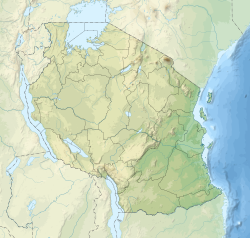| Mbudya Island | |
|---|---|
 Mbudya Island beach | |
| Location | Dar es Salaam Region, Kinondoni District |
| Nearest city | Dar es Salaam |
| Coordinates | 6°39′S39°14′E / 6.65°S 39.24°E |
| Area | 14.2km² |
| Established | 1975 |
| Governing body | Marine Parks & Reserves Authority (Tanzania) |
| Website | DMRS |
Mbudya Island (Kisiwa cha Mbudya, in Swahili) is a protected, uninhabited island under the Dar es Salaam Marine Reserve with the IUCN category II located within Kinondoni District of Dar es Salaam Region in Tanzania. The island reserve measures around 14.2 km2. Fungu Yasin is to the north of the island, Bongoyo Island is to the south, and the island of Pangavini is to the west. [1] [2] The island is home to endangered coconut crabs. [3]
